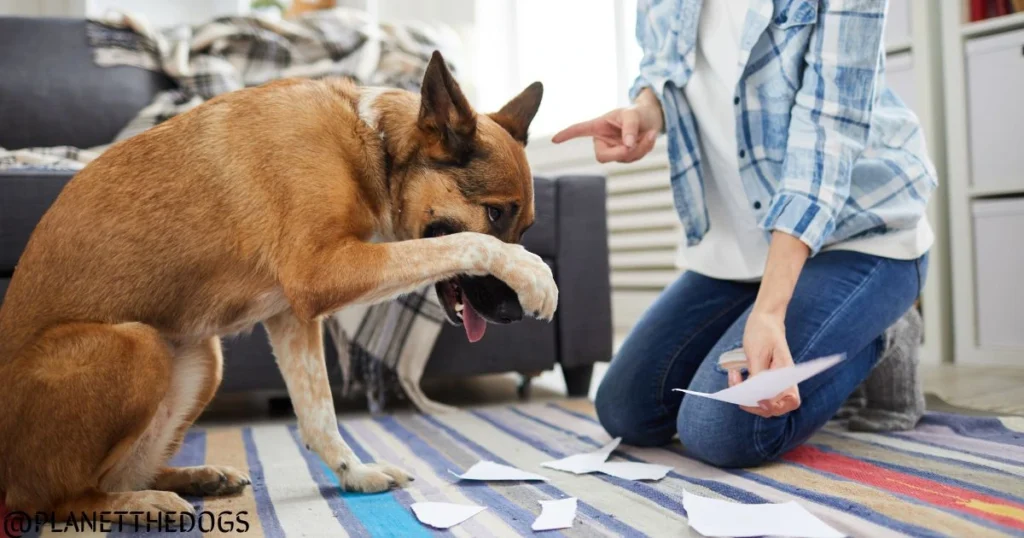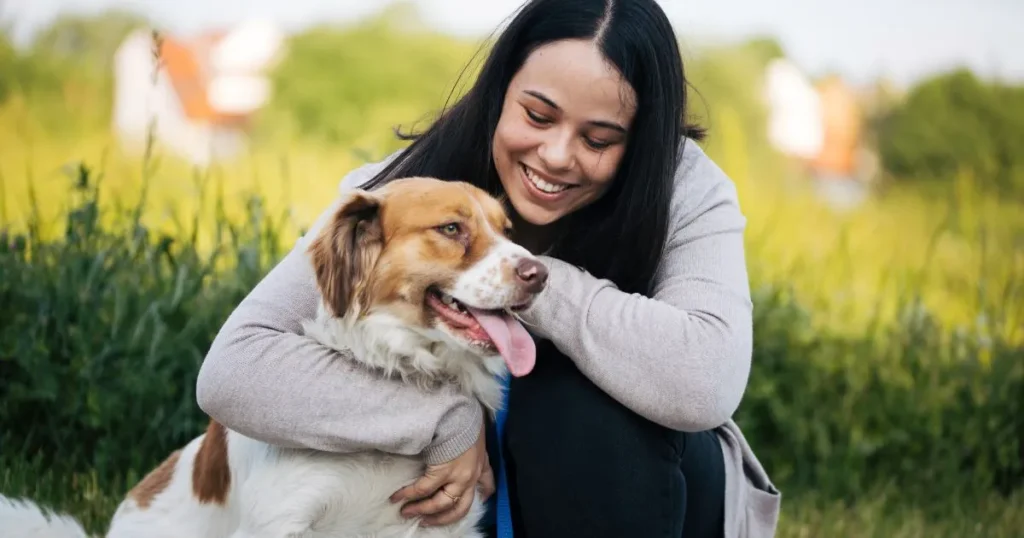Crate Training a Puppy at Night: A Complete Guide for Peaceful Sleep
Crate training a puppy at night is one of the most valuable skills you can teach your furry friend. Not only does it create a safe, comfortable environment for your puppy to sleep in, but it also supports house training and helps manage anxiety. However, crate training can be a challenge, especially when you’re trying to establish a nighttime routine. In this guide, we’ll take you through every step you need to know about crate training a puppy at night, including tips, benefits, and solutions for common challenges.
Table of Contents
Why Crate Training a Puppy at Night is Essential

The idea of crate training a puppy at night can feel daunting for first-time pet owners, but it’s incredibly beneficial in the long run. A crate serves as your puppy’s den—a space they can call their own, where they feel safe and secure. Establishing this safe space encourages better sleep patterns and minimizes the risk of destructive behavior while you’re away.
By training your puppy to sleep in their crate at night, you’re not only promoting good behavior, but you’re also building the foundation for effective housebreaking. Dogs naturally avoid soiling their sleeping area, which makes crate training an essential tool for potty training. Additionally, a puppy that is crate trained will develop a healthier relationship with their designated sleeping space, reducing the chances of separation anxiety in the future.
The Benefits of a Safe Sleep Space for Puppies
Crate training offers several key benefits, making it a must for both you and your puppy:
- Security and Comfort: Puppies are naturally den animals. A crate mimics a den and provides them with a quiet, safe space where they can retreat when they feel overwhelmed or need rest.
- Easier House Training: By limiting the space they have to roam at night, puppies are less likely to relieve themselves in their crate. This helps with housebreaking as they learn to hold their bladder until they’re let outside.
- Preventing Destructive Behavior: Crate training your puppy at night ensures they are safely contained when you can’t supervise them, reducing the likelihood of them chewing on furniture or getting into things they shouldn’t.
- Establishing a Routine: Crate training also helps establish a solid routine. Puppies thrive on consistency, and a structured nighttime schedule makes it easier for them to adjust.
How to Choose the Perfect Crate for Nighttime Training
When crate training a puppy at night, choosing the right crate is essential. There are a variety of crates on the market, but the best one will suit your puppy’s size, comfort needs, and your long-term goals.
Consider Size
A crate should be large enough for your puppy to stand, turn around, and lie down comfortably, but not so large that they have room to use one corner as a bathroom. An adjustable crate with dividers is a great option because it allows you to adjust the space as your puppy grows.
Choose Comfortable Bedding
Ensure the crate has soft bedding to make your puppy feel at ease. Blankets, cushions, or dog pads can create a cozy environment where your puppy can rest peacefully through the night.
Look for Durability
Opt for a sturdy, low-maintenance crate that’s simple to clean. Puppies can sometimes chew on their crates, so go for one made of sturdy materials that can withstand their teething.
For more crate options, you can check out our guide on the Best Crates for Puppies to help you make an informed decision.
Setting Up Your Puppy’s Crate for Peaceful Nights
Now that you’ve chosen the perfect crate, it’s time to set it up for success. The environment surrounding the crate can make a significant impact on how your puppy feels about sleeping in it. Follow these steps to create the ideal setup:
1. Location is Key
Place the crate in a quiet and safe area of your home where your puppy can feel part of the family. Keep it in a space that’s away from drafts but not isolated. Puppies can get lonely, so placing it near family activity can help them feel secure.
2. Bedding and Toys
Make sure the crate is filled with comfortable bedding. Add your puppy’s favorite toys or a soft blanket to make it feel like a safe haven. A familiar item, such as a t-shirt with your scent, can also help ease separation anxiety during the night.
3. Nighttime Ambiance
Dim the lights and avoid excessive noise before bed to create a calming atmosphere. A calming scent, such as lavender, can also help your puppy relax, but be sure to test it first to make sure your puppy isn’t sensitive to it.
Step-by-Step Guide to Crate Training a Puppy at Night

Training your puppy to sleep in their crate at night requires patience, consistency, and gentle guidance. Here’s a step-by-step breakdown of how to crate train your puppy at night:
Step 1: Introduce the Crate
Start by introducing your puppy to the crate during the day when they’re awake and alert. Let them explore it on their own. Use positive reinforcement—treats, toys, and praise—whenever they go near or inside the crate.
Step 2: Make the Crate a Positive Experience
Create positive associations with the crate by feeding your puppy their meals inside it. This helps them view the crate as a place of reward, not punishment. You can also use the crate for short naps during the day, so they associate it with rest.
Step 3: Establish a Nighttime Routine
Maintain a steady nighttime routine to help your puppy feel secure. Begin with a bathroom break right before bedtime, then gently lead them to their crate. Ensure they’re cozy and settled before closing the door. Keep the environment calm by dimming the lights and avoiding any stimulating activities.
Step 4: Gradual Crating Process
At first, your puppy may whine or resist being in the crate at night. Gradually increase the time they spend in the crate during the day and at night. Start by crating them for short intervals before extending the duration.
Step 5: Stay Calm and Consistent
If your puppy whines or barks in the crate, wait a few minutes before responding. Don’t give them attention immediately, as this could reinforce the behavior. Instead, wait until they’re calm before letting them out. Over time, they will learn to self-soothe in the crate.
Establishing a Nighttime Routine for Your Puppy
A consistent puppy nighttime routine is essential for success. Here’s how to build a routine that will help your puppy settle into a peaceful sleep:
- Bathroom Break: Take your puppy outside for a final bathroom break before bed. A full bladder could cause discomfort and restlessness during the night.
- Playtime: Spend a few minutes engaging in a fun activity with your puppy to help expend their energy. A well-exercised puppy is more likely to settle down and fall asleep easily.
- Calm Down: After playtime, offer a calming activity like light petting or gentle music to help your puppy unwind.
- Crate Time: Guide your puppy to the crate and settle them inside. Keep the area quiet and calm to signal that it’s time to sleep.
How to Handle Common Challenges During Nighttime Crate Training
Crate training a puppy at night can come with its fair share of challenges. Here are a few common challenges you might face and effective ways to address them:
1. Whining and Crying
Puppy whining in the crate is a normal part of the adjustment process. As difficult as it may be, resist the urge to rush to their side immediately. Instead, wait for them to settle before giving attention. If the whining persists, check that all their basic needs are met—ensure they’ve had a bathroom break, are well-fed, and feel comfortable in their space—then try again calmly.
2. Restlessness
If your puppy is restless, check that their crate is the right size, has soft bedding, and is free from distractions. Exercise them during the day so they’re more likely to sleep soundly at night.
3. Bathroom Breaks
Puppies under 6 months of age often need bathroom breaks during the night. Set an alarm for a late-night potty break, and gradually increase the duration between breaks as they grow older.
For more tips, check out our article on How to Stop Puppy Crying in a Crate for more solutions to common crate training issues.
FAQs About Nighttime Crate Training
Q: How long will it take for my puppy to adjust to crate training a puppy at night?
Most puppies adjust to crate training a puppy at night within 2-4 weeks when trained consistently and gently. However, the timeline can vary based on the puppy’s temperament and previous experiences.
Q: What should I do if my puppy cries in the crate?
Give them time to calm down before offering attention. If their whining is solely for attention, this approach encourages them to develop self-soothing skills, which is an important part of crate training a puppy at night.
Q: Can I leave my puppy in the crate all night?
Puppies under 6 months old may need bathroom breaks during the night. Plan for at least one potty break and gradually extend the time they can stay in the crate while continuing crate training a puppy at night.
Q: What type of crate is best for crate training a puppy at night?
Choose a crate that is appropriately sized for your puppy. It should be large enough for them to stand, turn around, and lie down but not so spacious that they can use a corner as a bathroom. Adjustable crates with dividers are ideal for crate training a puppy at night, as they can grow with your puppy.
Q: Should I cover the crate at night for crate training a puppy at night?
Covering the crate can help create a cozy, den-like atmosphere, which many puppies find comforting during crate training a puppy at night. However, make sure your puppy has adequate airflow and isn’t distressed by the cover.
Q: How do I know when my puppy is ready to sleep through the night?
Puppies usually begin sleeping through the night as their bladder control improves, typically around 4-6 months of age. During crate training a puppy at night, monitor their progress and gradually reduce nighttime potty breaks as they grow.
Additional Resources
For more guidance on training and caring for your puppy, explore these helpful resources:
- Puppy Feeding Schedules: Learn how to establish a balanced feeding schedule to support your puppy’s growth and energy needs.
- How a Bland Diet Helps Digestion: Discover the benefits of a bland diet and how it can aid your puppy’s digestive health.
With patience and consistency, crate training a puppy at night will become an essential part of their routine. By following these steps for crate training a puppy at night, you’re setting your puppy up for success, ensuring they get the rest they need while maintaining a positive relationship with their crate.
For more tips and updates on puppy training and care, follow us on Instagram at Planet the Dogs. Let’s embark on this journey to raise happy and well-adjusted furry friends together!








